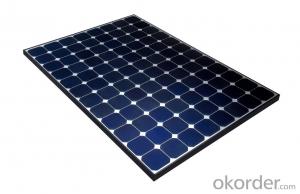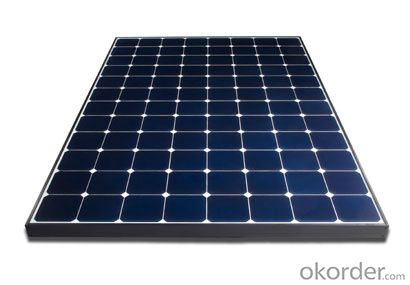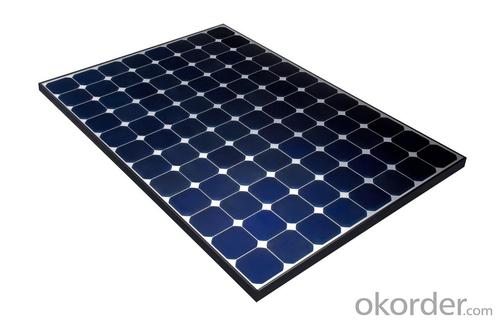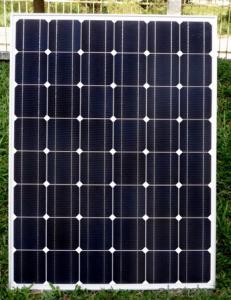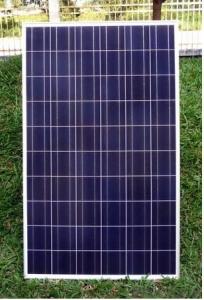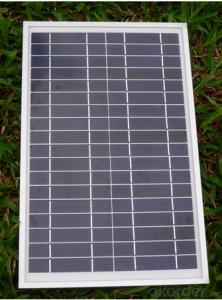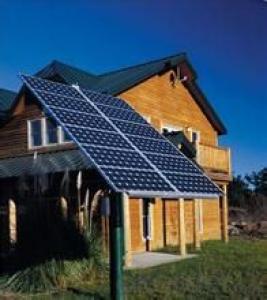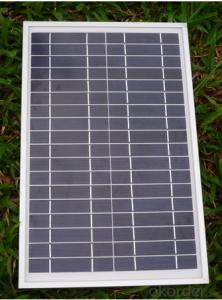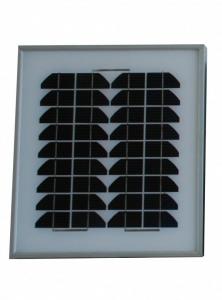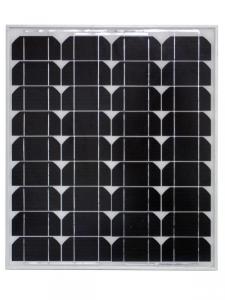A1 Solar Panels - Mono Solar Panel 290W A Grade with Cheapest Price
- Loading Port:
- Shanghai
- Payment Terms:
- TT OR LC
- Min Order Qty:
- 50 watt
- Supply Capability:
- 50000 watt/month
OKorder Service Pledge
OKorder Financial Service
You Might Also Like
Specification
Mono Solar Panel 290W A Grade with Cheapest Price
Product description
60 cell multi-crystalline solar module. 40mm natural anodised frame. IP65 rated Jbox, 1m solar cable and a pair of MC4 connectors.TÜV SÜD,SABS ISO 9001:2008 certified.
Most solar modules are currently produced from crystalline silicon (c-Si) solar cells made of multicrystalline andmonocrystalline silicon. In 2013, crystalline silicon accounted for more than 90 percent of worldwide PV production, while the rest of the overall market is made up of thin-film technologies using cadmium telluride, CIGS and amorphous silicon[7]Emerging, third generation solar technologies use advanced thin-film cells. They produce a relatively high-efficiency conversion for the low cost compared to other solar technologies. Also, high-cost, high-efficiency, and close-packed rectangular multi-junction (MJ) cells are preferably used in solar panels on spacecraft, as they offer the highest ratio of generated power per kilogram lifted into space. MJ-cells are compound semiconductors and made of gallium arsenide (GaAs) and other semiconductor materials. Another emerging PV technology using MJ-cells is concentrator photovoltaics (CPV).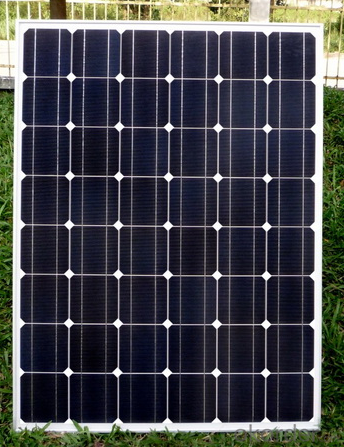
Application
Industrial
Commercial
Residential
Product feather
solar panel refers to a panel designed to absorb the sun's rays as a source of energy for generating electricity or heating.
A photovoltaic (in short PV) module is a packaged, connected assembly of typically 6×10 solar cells. Solar Photovoltaic panels constitute the solar array of a photovoltaic system that generates and supplies solar electricityin commercial and residential applications. Each module is rated by its DC output power under standard test conditions, and typically ranges from 100 to 365 watts. The efficiency of a module determines the area of a module given the same rated output – an 8% efficient 230 watt module will have twice the area of a 16% efficient 230 watt module. There are a few solar panels available that are exceeding 19% efficiency. A single solar module can produce only a limited amount of power; most installations contain multiple modules. A photovoltaic system typically includes a panel or an array of solar modules, a solar inverter, and sometimes a battery and/or solar tracker and interconnection wiring.
Packaging
24-26pcs into carton 312pcs for 20 foot container 712pcs for 40 foot container.
- Q: What is the difference b/w them which one is better .
- In the practical sense, the differences are trivial. I'd buy on price per watt, unless space is at a premium (it isn't for most installations).
- Q: Can solar panels be used to power a factory?
- Yes, solar panels can be used to power a factory. By installing a sufficient number of solar panels on the factory's premises, the factory can generate enough renewable energy to meet its power requirements. This can help reduce reliance on traditional power sources and contribute to a more sustainable and eco-friendly operation.
- Q: Are solar panels a good investment?
- Yes, solar panels are a good investment. They provide long-term financial benefits through reduced energy bills, potential tax incentives, and increased property value. Additionally, they contribute to a cleaner environment by reducing reliance on non-renewable energy sources.
- Q: Can solar panels be used for powering a marina or boating facility?
- Yes, solar panels can be used to power a marina or boating facility. Solar panels are a sustainable and efficient source of electricity that can provide clean energy to run various equipment, lighting, and charging stations at the marina or boating facility. Additionally, solar power can help reduce dependency on fossil fuels and lower operating costs in the long run.
- Q: What are the financial benefits of installing solar panels?
- Installing solar panels can provide several financial benefits. Firstly, solar panels allow homeowners to generate their own electricity, reducing their reliance on the grid and potentially lowering their monthly utility bills. Additionally, excess energy produced by solar panels can be sold back to the grid, resulting in potential income through net metering or feed-in tariffs. Moreover, investing in solar panels can increase the value of a property, making it more attractive to potential buyers and potentially leading to higher resale prices. Finally, solar panels can also qualify for various tax incentives, grants, or rebates, further reducing the initial installation costs and providing additional financial savings.
- Q: Are you a Solar Panel Specialist/Genius/Enthusiast?
- No, just an amateur. I guess that could be called an Enthusiast. I think most people find the topic somewhat interesting, some more than others. Why do you ask?
- Q: i need to make a solar panel model for a project in science and i would like to know how to build a easy model at home that wont cost alot
- There are different types of solar panels. Photovoltaic for electricity, and thermal for heating water, and passive for heating air. So it would help if you would say what type you are going to build. Theere are a lot of videos on you tube on how to make solar panels. use the link below.
- Q: Can solar panels be installed on the ground instead of a roof?
- Yes, solar panels can be installed on the ground instead of a roof. Ground-mounted solar panels are a viable alternative when roof space is limited or unsuitable for installation. Ground installations offer flexibility in panel orientation and tilt, making it easier to maximize solar energy production. Additionally, ground-mounted systems are often easier to maintain and can be expanded more easily than roof-mounted ones.
- Q: i've heard environmentalists like ed begley jr use the phrase quot;peak shaving hourswhen talking about solar energy.what does that phrase mean, please?thank you to all who respond.
- From a power company's perspective, it costs more to supply electricity during hours when electricity use is high. The times of day when power use is the highest are called peak hours. Historically power companies would sometimes charge large power users a higher rate during peak hours to encourage them to shift their electricity use to other times of the days. With the development of smart power meters and smart grid technology, it's now possible to offer the same incentive to individual home owners. so i'm wanting to eventually get solar panels.? If you live in an area where the electric rate varies depending on the time of day, then peak shaving improves your payback/return of investment on grid tied solar panels. Particularly in areas with high air conditioner usage, the peak hours generally correspond to the times when solar panels generate the maximum power. Look at it like this: Suppose your power company charges you $0.5/kWH during off peak hours and $0.30/kWH during peak hours. Because the solar panels generate the most power when the cost of electricity is the highest, it is easier to justify the cost of installing the panels because you are avoiding buying electricity at the highest rate. If your power company just bills you at a flat rate at all times, then it becomes more difficult to justify the cost of installing the panels and associated equipment..
- Q: i wanted to buy solar panels but this guy told me one will just power one light bulb what i want to know is how much thay cost and is it true tat if more power leaves your house than goes in the power company has to send u a cheek
- Whether you get a check for excess power generation depends on where you live. Some places in Texas will do that, the largest 3 utilities in California will not. The bottom line is that you should not expect solar panels to be a moneymaker. They may or may not be a money saver in the long run, depending on your situation. Solar hot water can pay back in a few years, if it displaces an electric water heater, and if it's in a location that is generally warm. Solar electric usually takes longer to pay back, if ever. The best payback is for those who have expensive electricity already, and are also in a sunny area. As an example, our system cost $2k net, and saves us about $600 / year in electricity (i.e., all our usage). It will take 20 years to pay back the installation cost, but I admit we did it for more reasons than the financial.
Send your message to us
A1 Solar Panels - Mono Solar Panel 290W A Grade with Cheapest Price
- Loading Port:
- Shanghai
- Payment Terms:
- TT OR LC
- Min Order Qty:
- 50 watt
- Supply Capability:
- 50000 watt/month
OKorder Service Pledge
OKorder Financial Service
Similar products
Hot products
Hot Searches
Related keywords


